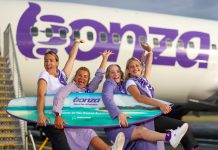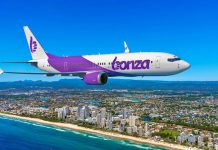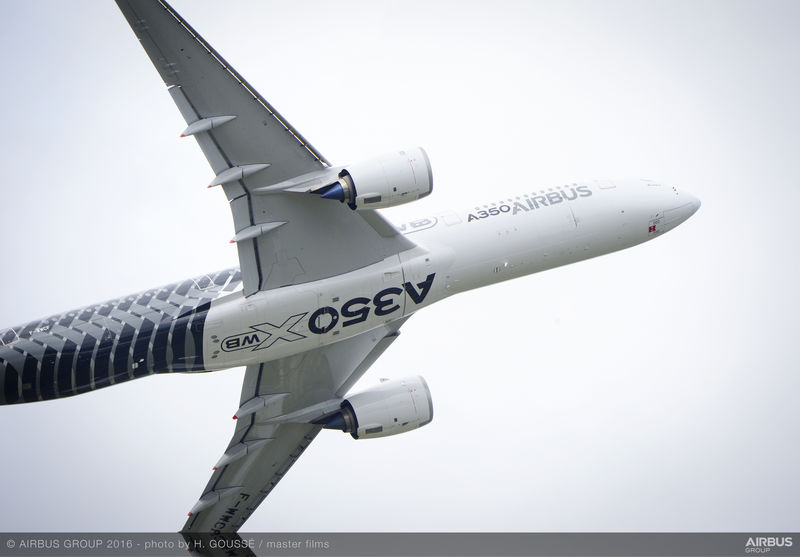Stronger than expected passenger demand will help airlines make bigger than expected profits in 2017 but the rewards will not be as big as last year.
There are also signs that the falling yields that have delivered cheaper fares are stabilising, with a predicted 2 per cent fall for 2017 the smallest decrease in recent years.
Nonetheless, the estimated average return airfare in 2017 of $US353 is still 64 per cent below 1996 levels after adjusting for inflation.
And it comes as airline connectivity is better than ever with the number of unique city pairs served by aviation is forecast to grow to 19,699, up 99 per cent on 1996, as airlines take delivery of some 1850 new aircraft to expand the global commercial fleet by 3.8 per cent to 28,645 planes.
A revised estimate of airline global profits released Monday by the International Air Transport Association puts the figure the figure at $US31.4 billion, up from a previously forecast $US29.8 billion, on better than expected global GDP growth of 2.9 per cent. However, the figure is below IATA’s revised 2016 profit of $34.8 billion.
That equates to $US7.69 per passengers, down from $US9.13 in 2016 and $US10.08 in 2015. It means the average net profit margin will be 4.2 per cent, down from 4.9 per cent in 2016.
A big driver will be robust passenger demand growth of 7.4 per cent over the course of the year, the same growth as 2016 and 2.3 percentage points higher than expected.
This translates to an additional 275 million passengers to bring the number of people expected to fly this year to 4.1 billion — set to be the biggest year-on-year growth in absolute passengers numbers ever recorded.
Cargo demand, a good indicator of economic health, is expected to grow by 7.5 per cent in 2017, more than twice the growth in 2016 and 4 percentage points above the previous forecast.
“Airlines are defining a new epoch in industry profitability,’’ IATA director general Alexandre de Juniac said at the airline umbrella group's annual meeting in Cancun.
“For a third year in a row we expect returns that are above the cost of capital. But, with earnings of $7.69 per passenger, there is not much buffer. That’s why airlines must remain vigilant against any cost increases, including from taxes, labor and infrastructure.’’
On the cost front, overall industry expenses are expected to rise $US44 billion to $US687 compared to a $US7 billion rise in revenues to $US743 billion.
Modest benefits from hedging is tipped to see the total industry fuel bill slightly below 2016 levels at $US129 billion, accounting for 18.8 per cent of industry costs. This assumes an average price of Brent crude of $US54 a barrel, up from $US44.60 in 2016, with jet kerosene prices averaging $US64 this year.
However, IATA warned that rising spot fuel prices and the influence of fuel hedges were offsetting the impact of cheaper fuel on unit costs.
On a regional basis, IATA said North American carriers will remain the “powerhouse of industry profitability’’ and generate about half of the collective global profit.
The $US15.4 billion predicted net profit from this region is down slightly from 2016’s $US16.5 billion but still represents $US16.32 per passengers.
The strong result was attributed to industry restructuring that has reduced the number of airlines, a relatively strong economy and resilient US dollar.
But IATA warned US airlines had less of a buffer against fuel price rises and faced a tight labour market with rising wages.
“Nonetheless, profitability remains at historically high levels, even if slightly down on 2016,’’it said.
Middle Eastern carriers are expected to see a sharp fall in profit to $US0.4 billion ($US1.78 per passenger) from $US1.1 billion in 2016, despite a 7 per cent growth in passenger demand.
“Trading conditions for the Middle Eastern carriers have sharply declined over the last six months,’’ IATA said. “Profitability and load factors are down significantly, as traffic and some business models have come under pressure.
“There is growing evidence that the ban on large electronic devices in the cabin and the uncertainty created around possible US travel bans is taking a toll on some key routes.
“Meanwhile the region is struggling with increased infrastructure taxes/charges and air traffic congestion.’’
Despite disappointing results from individual carriers, Asia-Pacific airlines are expected to post a $US7.4 billion net profit ($US4.96 per passenger), down from $US8.1 billion in 2016, amid a 10.4 per cent surge in passenger demand.
IATA said the resurgence of cargo demand was playing a big role in the strength of the region’s carriers, which collectively account for about 40 per cent of air cargo shipments.
European carriers are forecast to post a $US7.4 billion profit ($US6.94 per passenger) amid warnings about the impact of continued terrorism and passenger growth of 7 per cent.
Latin American airlines are tipped to post a $US0.8 billion profit ($US2.87 per passenger) with 7.5 per cent passenger growth, while African airlines should post the only regional loss of $0.1 billion (-$US1.50 per passenger) as demand grows by a less than expected 7.5 per cent.
“African carriers remain in the red; but without a deterioration on 2016 performance,’’ IATA said. “On safety, the region’s carriers achieved a major milestone with zero jet hull-losses in 2016.”
























